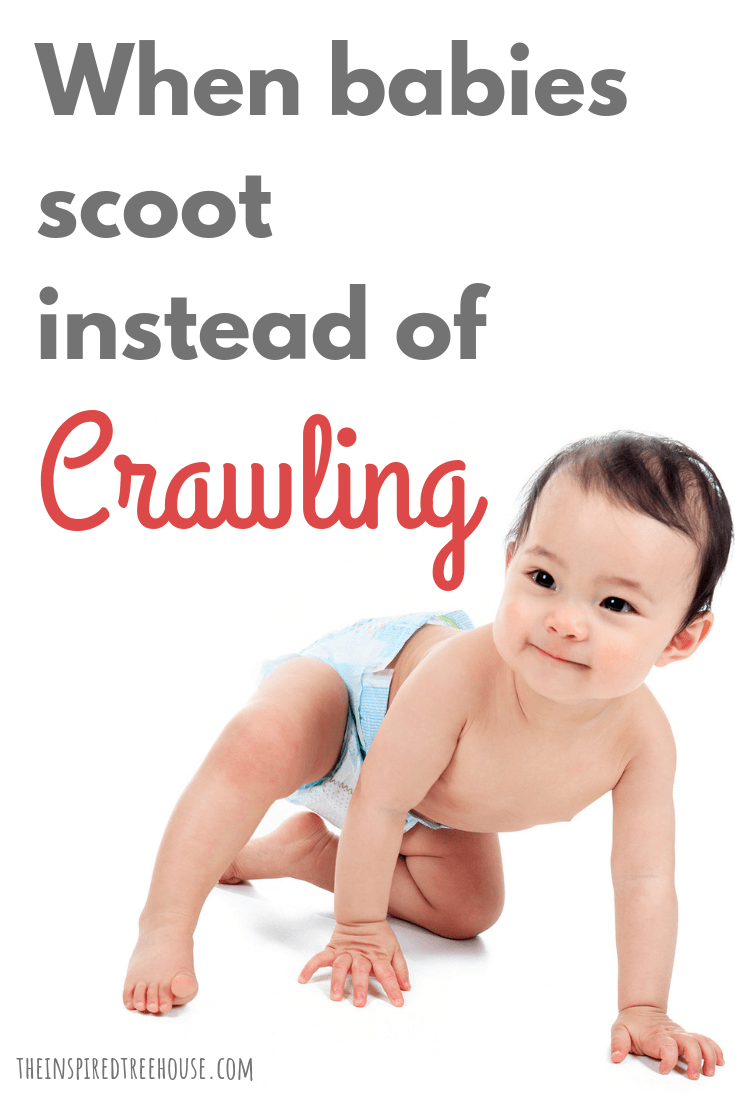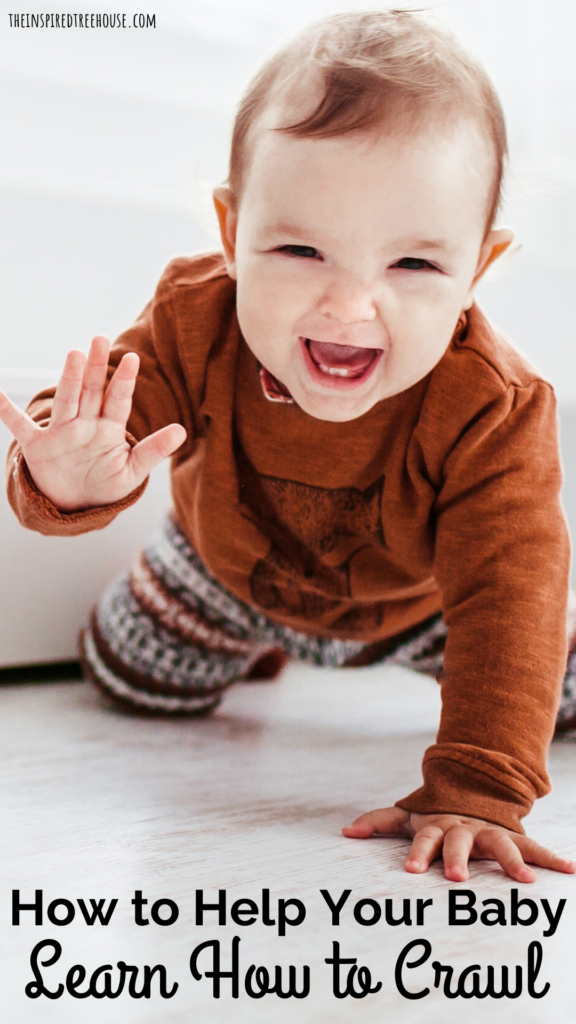Learn how to help a baby crawl and check out some of the most common alternative “crawling” patterns we’ve seen in our therapy practice.
When Do Babies Start Crawling?
Crawling on all fours is one of the first efficient modes of transportation for a baby. Sure, rolling can get your little one from one place to another but crawling can help him chase you from the kitchen to the bathroom in a matter of seconds! If you’re wondering – when do babies crawl? The answer is that babies often learn to crawl between the age of 6-9 months and the crawling milestone is considered by many professionals to be one of the most important stages of development. Read on to learn how to help a baby crawl and to find out more about alternative forms of “crawling”.
Why Is Crawling a Milestone?
Learning to crawl is the foundation of many important pieces of development including: bilateral coordination (using both sides of the body together to perform a task),integration of primitive reflexes, motor planning, hand eye coordination, core strength, reciprocal arm and leg movements, hand strength, balance, and more! And it is the skill that will get your child’s body ready for standing and walking, climbing and running!
Babies learn to crawl at their own pace. Some satisfy their need to explore and are extremely persistent with learning this skill early, while others are perfectly content to lie on their backs and watch the world go by around them.
Alternative Forms of Crawling
Some babies pick up the quadruped position quickly and learn to rock back and forth on their hands and knees for a bit before learning the reciprocal arm and leg pattern to move forward. Others will learn alternative forms of mobility that can be just as quick but that can create some funky movement patterns and asymmetries in their little bodies as they grow and develop. You can learn more about ideas for how to fix asymmetrical crawling and how to support efficient crawling patterns below.
Here are some of the creative crawling patterns I’ve seen in my career as a physical therapist.
Commando Crawling
Just as you can imagine, this form of crawling has a baby slithering across the floor like she is trying to avoid being seen! The belly is in contact with the floor, elbows and knees are bent and the head is upright. She will progressively pull on the floor with bent arms and legs to advance herself from one point to another.
Scooting
Also known as bottom shuffling, scooting is a form of movement in which a baby might sit on his bottom with one leg bent forwards, foot on the floor and push on the opposite arm. Infants who move like this always sit with the same foot in front. You may also see a baby scoot along the floor using both feet while rocking their pelvis back and forth to progress their movement.
Bear Crawling
Contrary to the preferred hands and knees position that developmental specialists like to see babies choose as their mode of transportation, children who bear crawl keep their arms and legs straight as they use reciprocal movements to get where they want to go.
So What’s the Big Deal With the Crawling Developmental Milestone?
While these creative crawling patterns may seem funny or cute, the downside of them is that babies do not get the opportunity to develop the skills mentioned above that the quadruped position provides. However, babies will choose the most efficient mode of transportation for them as individuals and, as a parent, it is one of the most exciting times for you as you witness the joy on your little one’s face when she finally gets to that toy on her own. Independent mobility is an amazing milestone!
How to Help a Baby Crawl
So, how can you help a baby crawl? First of all, no need to stress. Learning to crawl basically requires providing lots of opportunities to find quadruped position during play. Here are some of our favorite ideas:
Encourage Climbing
Throw some pillows on the floor and create a crawling obstacle course in which your baby has to negotiate up and over those pillows to get to their desired location. Work on climbing up stairs — I know, I know…not where you want her to go, but it’s next to impossible for a baby to creep up the stairs without weight bearing through her hands and knees!
Work on Crossing Midline
Encouraging your baby to cross the midline using activities in sitting or supported side sitting – which encourages weight bearing through weak arms which may be making it hard to push up into quadruped. Midline crossing allows work on trunk rotation for transitions from sit to 4 point/kneeling. To practice, place a toy on one side of your child’s body, just out of reach, while you sit on the other side. Have her get the toy and hand it to you.
Push a Laundry Basket
Give your baby some great proprioceptive input through his hands/elbows/shoulders and great core strengthening by having him push basket weighted down with a few toys across the floor. You may have to help, but the joy on his face when he gets that basket moving will be priceless! Additionally, it will be next to impossible for him to move that basket without being up on his knees (or his feet).
Model It!
Babies love to please their parents and recognize the pride on your face when they do something well! Sometimes, just being in a quadruped position yourself will encourage your little one to get there too! Play a game of peek-a-boo in this position or have a crawling race to get their preferred toy.
The bottom line…
Babies will choose the most efficient and independent mode of transportation that works for them! As long as there are no underlying developmental concerns or specific diagnoses, there is no need to obsess over stopping a typically functioning child from ever demonstrating a movement pattern like those above. The effort, time and potential guilt is not worth it! Instead focus on creating opportunities for skill development in quadruped during play on a consistent basis and little ones will thrive!


Latest posts by Lauren Drobnjak (see all)
- End of the Year Gifts for Therapists - April 14, 2024
- Playful Therapy Posters to Spruce Up Your Room - March 30, 2024
- How to Help a Baby Crawl & Creative Crawling Patterns We See in Therapy - March 19, 2024

